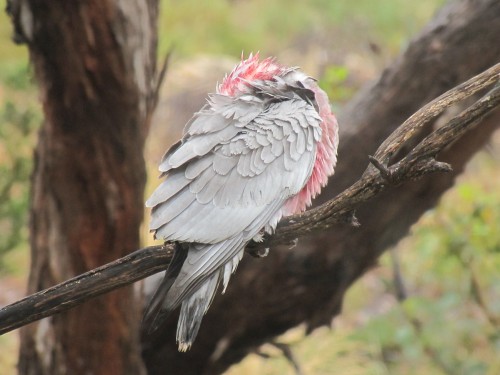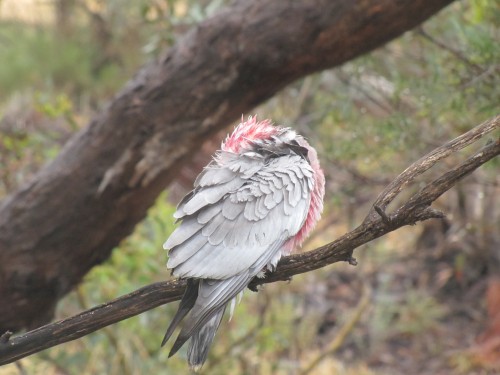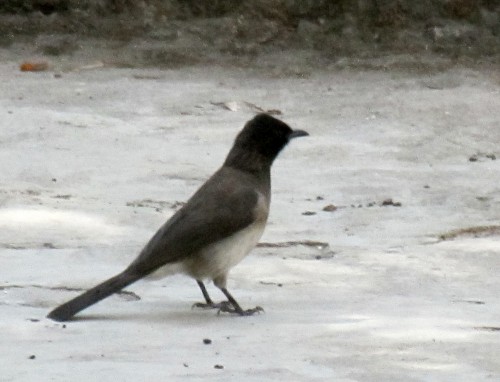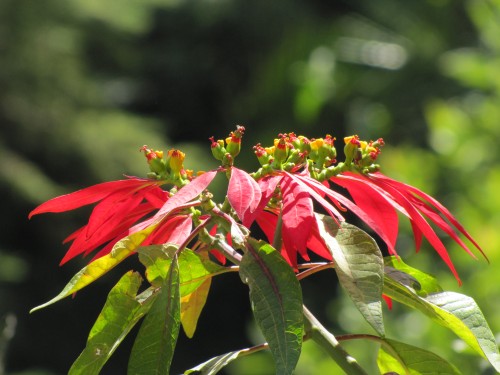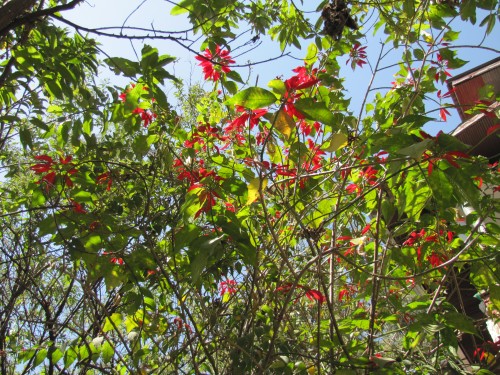One wet Galah
Last week we had a persistent three to four hours of rain. It was quite welcome after a long, dry spell and some very hot days. The cooling effect was noticeable.
We always enjoy having good falls of rain as it helps the trees in our orchard and the many native Australian plants we have planted over the years. The rain also tops up our rainwater tanks.
I know that the many birds resident in our garden – as well as some of the visiting species passing through – enjoy the rain as well. I was amused by the individual Galah shown in today’s photos. This bird looks quite wet and took to a branch near our sun room to dry out – and have a little nap at the same time.
King Parrots in Artarmon, Sydney
When we go to Sydney to visit family, we stay with our son and his family in Artarmon, several train station stops north of the Harbour Bridge. This area has many trees lining the streets, many more in gardens and there are several parks in the vicinity. While the birding is not great in terms of numbers of species, the bird life is still quite interesting.
The common species include: Noisy Miners, Australian Magpies, Australian Ravens, Common Mynas, Rainbow Lorikeets, Rock Doves, Laughing Kookaburras, Grey Butcherbirds and Pied Currawongs. From time to time I see Welcome Swallows, Galahs and Sulphur-crested Cockatoos. On one visit we even had a Boobook Owl in a tree in the garden.
More recently, my son – who has just a little more than a passing interest in birds – reported seeing a small group of 4 or 5 King Parrots frequenting his garden, or the street trees nearby. He hasn’t had a chance to get a photo yet, and I didn’t either on our recent visit last month. I did get several good views of them flying around nearby, but no clear views within camera range. Instead, I’ve included today a few photos of this species seen elsewhere.
Pigeons by the dozens (almost)
I had a doctor’s appointment this morning. Nothing major; just a check up.
As I was driving out of the driveway I noticed that one of the bushes in our garden had suddenly “sprouted” some extra colour. (Confession: the bush is actually dead – I just haven’t got around to removing it yet, or replacing it with something living.)
Eleven crested pigeons were sitting there all fluffed up against the chilly morning and enjoying the early morning sunshine. It wasn’t a very big bush, so it looked really great.
Crested Pigeons are very common in our area. I frequently see loose flocks of a dozen or more – sometimes as many as 30 or 40 – perched on power lines or fences. Once I even counted about 60 all in close proximity to one another. It was quite a sight.
Grey-headed Sparrow, Ethiopia
Last December we visited our daughter who was teaching in Addis Ababa. While we were there I had quite a few opportunities to do snatches of birding, including some photography. On one occasion we visited a silk shop situated in a private garden. While my wife and daughter were busy shopping I took the opportunity to wander the garden.
This Grey-headed Sparrow was most obliging, posing nicely for the camera in good light. This species of sparrow is widespread in Africa, not only in Ethiopia. After doing a little research on the species I think that this is the sub-species Northern Grey-Headed Sparrow, but I’d like to be corrected by my readers if I’ve got it wrong.
Common Bulbul, Addis Ababa
During our recent stay in Ethiopia we went to visit a silk outlet in suburban Addis Ababa. This shop was in a private home with an extensive garden. It was a delightful spot and quite the ideal retreat from the rush of a crowded city. While our wives were buying some lovely items from the shop, Brett and I meandered through the garden taking in the serenity. The beautiful garden naturally attracted a range of local birds, including the Common Bulbul shown above.
The view I had was only fleeting; just enough time to capture this rather poor photo, but good enough for a positive ID. My research has revealed that it is a common species throughout Africa. You guessed it – I never saw this species again! Such is the birding life. Common Bulbuls inhabit a wide range of environments, including thick undergrowth, gardens and parks. This species eats fruit, nectar and insects.
Australia only has one species of bulbul, the introduced Red-whiskered Bulbul (click for a photo).
Below I have included several photos taken in the gardens.
